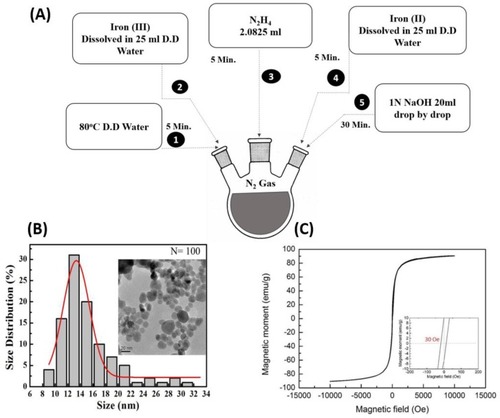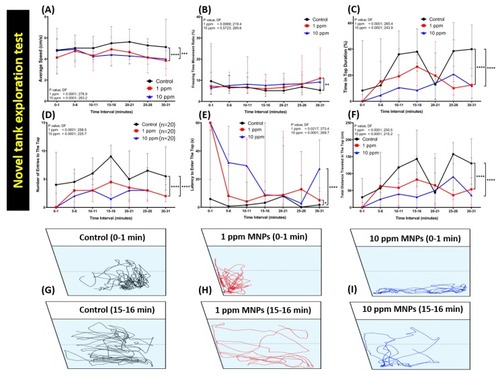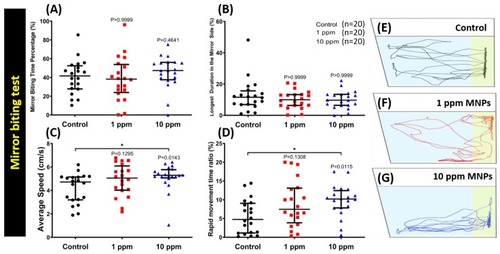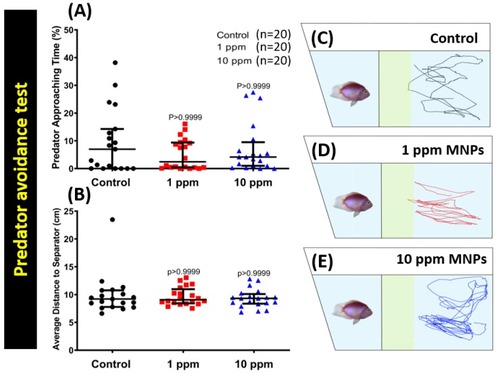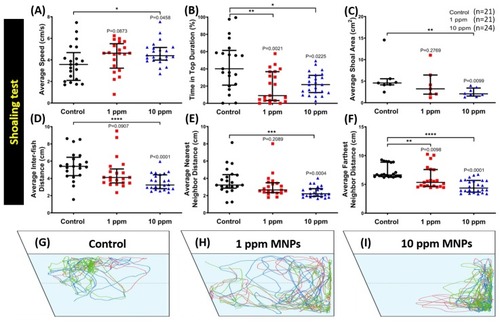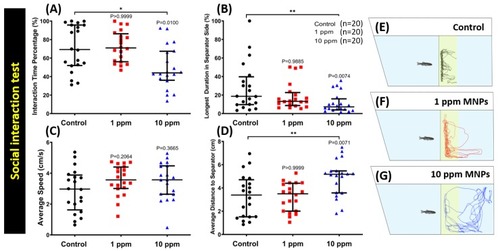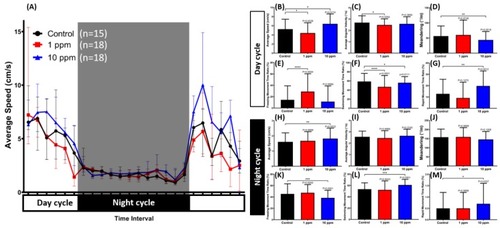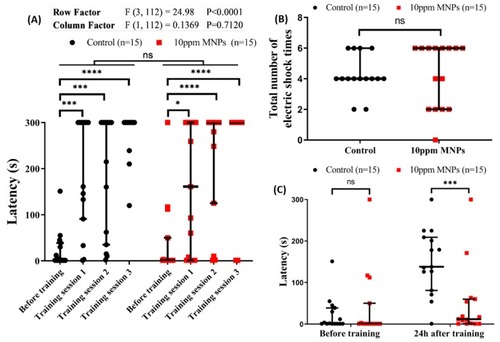- Title
-
Ecotoxicity Assessment of Fe3O4 Magnetic Nanoparticle Exposure in Adult Zebrafish at an Environmental Pertinent Concentration by Behavioral and Biochemical Testing
- Authors
- Malhotra, N., Chen, J.R., Sarasamma, S., Audira, G., Siregar, P., Liang, S.T., Lai, Y.H., Lin, G.M., Ger, T.R., Hsiao, C.D.
- Source
- Full text @ Nanomaterials (Basel)
|
Physical property characterization of Fe3O4 magnetic nanoparticles (MNPs) used in this study. ( |
|
Behavior endpoint of control and Fe3O4 MNPs-exposed zebrafish in novel tank exploration test after two weeks’ exposure. ( |
|
Mirror biting behavior endpoint comparisons between the control group, 1 ppm, and 10 ppm Fe3O4 MNPs-exposed zebrafish groups after two weeks of exposure. ( |
|
Predator avoidance behavior endpoint comparisons between control, 1 ppm, and 10 ppm Fe3O4 MNPs-exposed zebrafish groups after two weeks of exposure. ( |
|
Shoaling behavior endpoint comparisons between the control group, 1 ppm, and 10 ppm Fe3O4 MNPs-exposed zebrafish groups after two weeks of exposure. ( |
|
Behavior endpoint comparisons between the control group, 1 ppm, and 10 ppm Fe3O4 MNPs-exposed zebrafish groups after two weeks of exposure. ( |
|
The circadian rhythm assay for Fe3O4 MNPs-exposed zebrafish after 14-day exposure. ( |
|
Passive avoidance test on zebrafish after 14 days of Fe3O4 MNPs exposure to evaluate short-term memory. ( |

